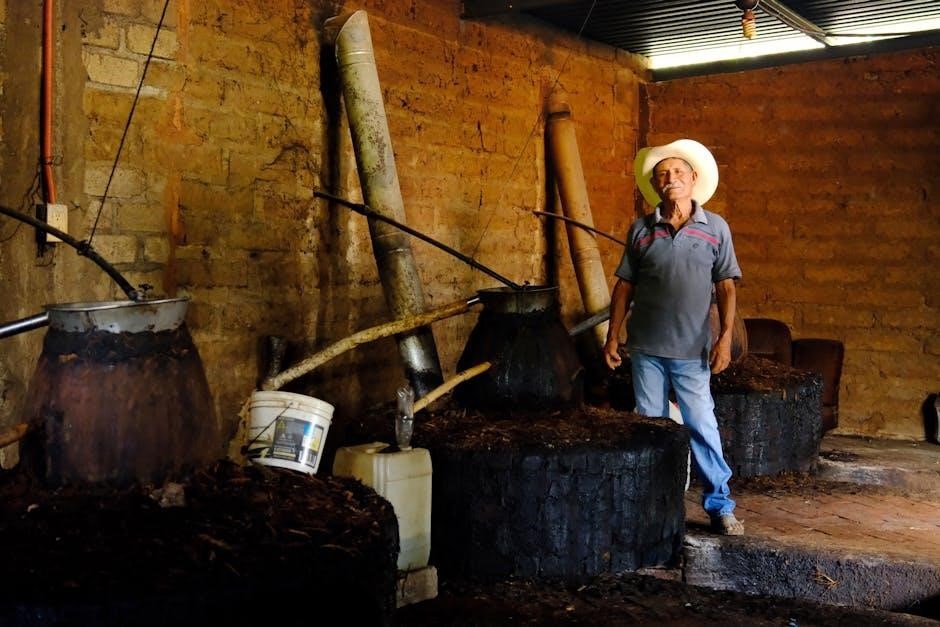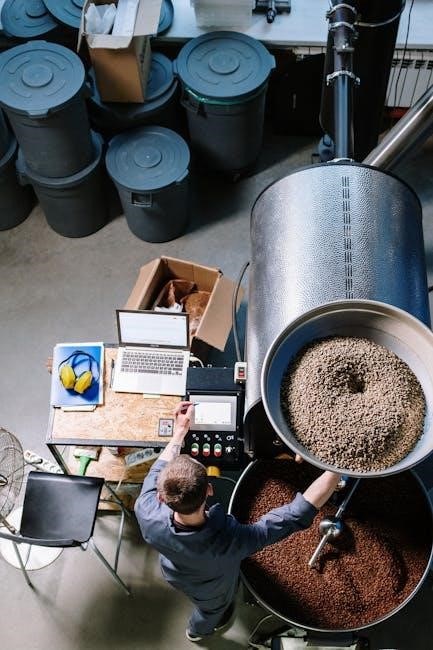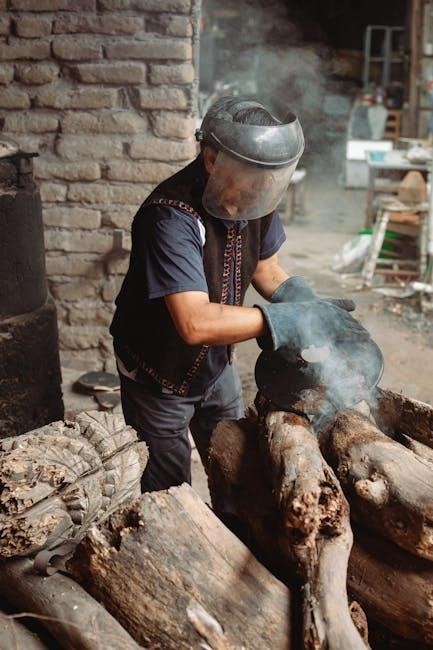rival roaster oven manual
Lost your Rival Roaster Oven manual? Don't sweat it! Get cooking with our easy guide. Roast like a boss! Find your Rival Roaster Oven manual here.
Rival roaster ovens are versatile kitchen appliances designed to roast, bake, and slow-cook various dishes. They provide an alternative to traditional ovens, freeing up oven space and offering portability. Many models feature temperature control and roasting racks.

Understanding Your Rival Roaster Oven Model
Identifying your specific Rival roaster oven model is essential for accessing the correct manual and understanding its features. The model number helps in finding specific instructions, troubleshooting tips, and recommended cooking guidelines tailored to your appliance.
Identifying Your Specific Model Number
Locating the model number on your Rival roaster oven is the first step in ensuring you have the correct information for operation and maintenance. Typically, the model number can be found on a sticker or plate affixed to the appliance. Check the back, bottom, or sides of the roaster oven for this identifying mark.
The model number is crucial for accessing the appropriate user manual. This manual contains specific instructions for your model, including temperature settings, safety precautions, and cleaning guidelines. Without the correct model number, you risk using information that doesn’t apply to your roaster oven, potentially leading to improper use or damage.
Common locations for the model number include the bottom of the base unit, near the power cord, or on the rear panel. Once you’ve located the model number, make a note of it. This will be essential when searching for the correct manual online or contacting customer support for assistance. Having this information readily available will save you time and ensure you get the correct resources for your Rival roaster oven.
Finding the Correct Manual for Your Model
Once you have identified your Rival roaster oven’s specific model number, the next crucial step is locating the corresponding user manual. This manual is your go-to resource for understanding how to operate, maintain, and troubleshoot your appliance safely and effectively.
Start by checking the Rival website or the website of their parent company (if applicable). Many manufacturers offer digital versions of their manuals for download. Enter your model number into the search bar to quickly filter results. If the manual isn’t available on the official website, consider searching online databases of appliance manuals.
Websites like ManualsOnline or similar platforms may host a copy of your Rival roaster oven manual. When downloading from a third-party site, ensure it’s a reputable source to avoid malware or incorrect information. If you’re unable to find a digital copy, you can try contacting Rival’s customer support directly. They may be able to provide a digital copy or even mail a physical one to you. Having the correct manual will ensure you use your roaster oven safely and effectively.
Initial Setup and Preparation
Before using your Rival roaster oven, unpack all components and thoroughly clean them. Ensure proper placement with adequate ventilation to prevent overheating and ensure safe operation according to the manual.
Unpacking and Cleaning Before First Use
Carefully unpack your Rival roaster oven, removing all packaging materials to ensure nothing is left inside. Before the first use, it is crucial to clean all removable parts thoroughly. Wash the roasting pan, roasting rack, and any serving dishes (if included) with warm, soapy water. Rinse them well and dry completely before reassembling.
This initial cleaning removes any manufacturing residues or dust that may have accumulated during packaging and shipping. Ensuring that your Rival roaster oven is clean before its first use will contribute to safe and effective cooking and prevent any unwanted flavors from affecting your food. Consult your user manual.
Proper Placement and Ventilation
When setting up your Rival roaster oven, placement is key to safe and efficient operation. Position the roaster on a stable, heat-resistant surface away from flammable materials. Ensure the oven is not placed near curtains, paper products, or any other items that could pose a fire hazard.
Proper ventilation is also essential. Leave adequate space around the roaster oven – several inches on all sides – to allow for proper air circulation. This prevents overheating and ensures even cooking. Avoid placing the roaster oven in enclosed spaces or under cabinets, as this can trap heat and potentially damage the appliance or surrounding surfaces. Always refer to the manual!

Operating Instructions
This section provides a guide to operating your Rival roaster oven. It covers essential functions like temperature control, settings, and how to properly utilize the roasting rack for optimal cooking results.
Temperature Control and Settings
To operate the Rival roaster oven effectively, understanding its temperature control is crucial. Locate the temperature control knob, typically found on the front panel. Ensure the knob is in the “OFF” position before plugging in the roaster. To set the desired temperature, turn the knob clockwise to the corresponding mark on the dial. Most models have a range from low to 450°F.
Refer to your specific model’s manual for precise temperature recommendations for different types of food. It’s important to preheat the roaster oven before adding food for even cooking. Monitor the internal temperature of your food using a meat thermometer to ensure it reaches a safe internal temperature. Always unplug the roaster and let it cool before adjusting the temperature.
Using the Roasting Rack
The roasting rack is an essential component of your Rival roaster oven, designed to elevate food above the bottom of the roasting pan. This elevation promotes even heat circulation around the food, preventing it from sitting in its own drippings and ensuring crispier results. To use the rack, first, ensure it is clean and properly positioned inside the roasting pan.
Place your food, such as poultry or a roast, directly onto the rack. Make sure the food is centered for balanced cooking. The rack allows fats and juices to drip into the pan below, which can then be used to make flavorful gravies or sauces. Be sure that the roaster isn’t overcrowded. Always consult your manual for specific instructions.
Cooking Guidelines and Tips
Achieving optimal results with your Rival roaster oven involves understanding cooking times, temperatures, and techniques. Preventing overheating and drying out is key to delicious, evenly cooked meals, so be sure to check the manual.
Recommended Cooking Times for Different Foods
Achieving culinary success with your Rival roaster oven relies heavily on understanding appropriate cooking durations for various food types. Referencing your Rival roaster oven manual is essential for accurate guidelines. Generally, poultry requires longer cooking times based on weight, while roasts depend on desired doneness. Vegetables benefit from shorter durations to prevent overcooking.
Always use a meat thermometer to ensure internal temperatures meet safety standards. Monitor your food periodically to prevent overheating or drying out, adjusting cooking times as needed based on your oven and recipe. Remember, overcrowding the oven can affect cooking times, so ensure adequate space.
Preventing Overheating and Drying Out
Maintaining moisture and preventing overheating are crucial for delicious results in your Rival roaster oven. Regularly check on your food’s progress to ensure it’s not drying out, adjusting cooking times as needed. Utilize the roasting rack provided to elevate food, promoting even cooking and preventing scorching.
Consider adding liquids like broth or water to the roasting pan to create steam, enhancing moisture retention. Covering the food loosely with foil during the initial cooking stages can also help prevent excessive browning and drying. Refer to your Rival roaster manual for optimal temperature settings for your specific dish. Avoid overcrowding, ensuring even heat distribution and airflow.

Maintenance and Cleaning
Proper maintenance ensures your Rival roaster oven lasts. Regular cleaning prevents buildup and maintains performance. Always unplug and cool the unit before cleaning the pan, rack, and lid according to manual instructions.
Cleaning the Roasting Pan and Lid
After each use, cleaning the roasting pan and lid of your Rival roaster oven is essential. Ensure the unit is unplugged and completely cooled before proceeding. The roasting pan is often removable, allowing for easier cleaning. Wash it with warm, soapy water, using a non-abrasive sponge or cloth to avoid scratching the surface. For stubborn food residue, soaking the pan in soapy water might be necessary.
The lid should also be washed with warm, soapy water. Rinse both the pan and lid thoroughly and allow them to air dry completely before storing. Avoid using harsh chemicals. This maintains the appliance.
Proper Storage Techniques
Proper storage of your Rival roaster oven is crucial for its longevity. Before storing, ensure that the roasting pan and lid are completely clean and dry. This prevents the growth of mold or bacteria. Store the roaster oven in a cool, dry place, away from direct sunlight and extreme temperatures.
It is advisable to store the roasting pan inside the roaster oven base to save space. If possible, store the roaster oven in its original box or a similar container to protect it from dust and damage. Avoid placing heavy objects on top of the roaster oven during storage to prevent deformation or breakage.

Troubleshooting Common Issues
Encountering issues with your Rival roaster oven is not uncommon. This section will address frequently experienced problems, such as temperature inaccuracies and uneven cooking, providing potential solutions for optimal performance and longevity.
Addressing Temperature Inaccuracies
Temperature inconsistencies can significantly impact cooking results with your Rival roaster oven. Begin by verifying the accuracy of the temperature dial against an external oven thermometer. Ensure the roaster oven is placed on a level surface, away from drafts or other heat sources that could influence its internal temperature. If inaccuracies persist, check the heating element for any signs of damage or malfunction.
Refer to your specific Rival model’s manual for calibration instructions, if available. In some cases, professional servicing may be required to rectify the temperature control system. Remember that environmental factors and food volume can affect cooking times.
Dealing with Uneven Cooking
Uneven cooking in a Rival roaster oven can be frustrating. To address this, first ensure that the food is placed evenly on the roasting rack, allowing for proper heat circulation. Avoid overcrowding the oven, as this restricts airflow. Rotate the food halfway through the cooking process to promote even browning and internal temperature distribution.
Check the heating element for any signs of damage or uneven heating patterns. Verify that the roaster oven is level and that the lid is properly sealed to maintain consistent temperature. If problems persist, consult the manual for troubleshooting tips specific to your Rival model.

